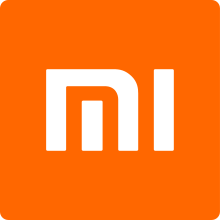Redmi Note 3
[3] The Xiaomi Redmi Note 3 is a smartphone developed by Xiaomi Inc. It is a part of the Xiaomi's low-end Redmi smartphone line, and has three variants.
- The MediaTek variant (codename hennessey) was released on November 24, 2015.[4]
- The Snapdragon variant (codename kenzo) was launched on February, 2016.[5]
- Redmi Note 3 Special Edition[6] (codename kate) was launched on June 2016, it features an upgraded modem and new housing, all other specifications are the same as the Snapdragon variant.
 Xiaomi Redmi Note 3 Gold (MTK) | |
| Codename | kate (Special Edition Snapdragon) kenzo (Snapdragon) hennessey (Mediatek) |
|---|---|
| Manufacturer | Xiaomi |
| Slogan | Rise to Power |
| Series | Redmi |
| First released | Snapdragon: February 2016[1] India: March 2016 MediaTek: November 2015[2] |
| Predecessor | Redmi Note 2 |
| Successor | Redmi Note 4 |
| Type | Touchscreen smartphone |
| Form factor | Slate |
| Dimensions |
|
| Mass | 164 g (5.8 oz) |
| Operating system | Snapdragon:Android 5.1.1 "Lollipop"
upgradeable to: Android 6.0.1 "Marshmallow" MediaTek:Android 5.0.2 "Lollipop" |
| System on chip | Qualcomm MSM8956 Snapdragon 650 MediaTek MT6795 Helio X10 |
| CPU | Snapdragon: Hexa-core (4x1.4GHz Cortex-A53 & 2x1.8GHz Cortex-A72) MediaTek: Octa-core 2.0GHz Cortex-A53 |
| GPU | Snapdragon: Adreno 510 MediaTek: PowerVR G6200 |
| Memory | 2GB(Std. version) or 3GB(High version) |
| Storage | 16GB(Std. version) or 32GB(High version) |
| Removable storage | Only Snapdragon Version Supports up to 256 GB microSD |
| Battery | Non-removable Li-Po 4050 mAh battery |
| Display | 5.5 in (140 mm) IPS LCD capacitive touchscreen 1080 x 1920 pixels, ~403 ppi, 16M colors |
| Rear camera | Samsung S5K3P3 16MP, f/2.0, phase detection autofocus, dual-LED (dual tone) flash (Snapdragon Edition) Samsung S5K3M2 13 MP Camera (Mediatek Edition) |
| Front camera | OmniVision OV5670 5MP, f/2.0 Camera |
| Connectivity | |
| Website | hennessey/kenzo: www kenzo: www |
Specifications
Hardware
The MediaTek variant of Xiaomi Redmi Note 3 is equipped with MediaTek MT6795 Helio X10, PowerVR G6200 GPU. The Snapdragon variants have the Hexa-core 1.8 GHz Snapdragon 650 and Adreno 510 GPU.[7]
All variants include a 5.5 in (140 mm) 1080p display, 2 GB or 3 GB RAM, 16 GB or 32 GB eMMC 5.0 Flash, a 5MP front camera, non-removable Li-Po 4050 mAh battery and it supports 802.11b/g/n/ac networks on both the 2.4 and 5 GHz bands. The phone also supports two SIM cards or, in case of the two Snapdragon variants, a SIM card + microSDHC card; the secondary SIM card slot is shared with the microSDHC slot.
One notable difference between the MediaTek and Qualcomm variants of the phone is the primary camera. The Mediatek phone uses a less powerful 13MP camera sensor, whereas this is upgraded to a 16MP sensor on the Qualcomm models.[8]
The Snapdragon versions use a special display technology known as 'Sunlight Display' in which the phone detects the ambient light and makes pixel level adjustments in order to be better legible in the sunlight. It also features a blue light filter for low light night reading.[9]
Another notable feature of the phone is the presence of a finger-print sensor at the back. It can also be used for capturing images via the front or the rear cameras.
Software
Kenzo runs on an Android based MIUI 7 OS which was upgraded to MIUI 8 based on Android 6.0 and then to the newest MIUI 10.[10] Many custom Android ROMs are available for this device;[11] notable examples are MIUI 9 based on Android 7.0, CyanogenMod 13 and 14 (based on Android Marshmallow and Nougat, respectively), Lineage OS 13, 14, 15 and an unstable port of Sailfish OS. Custom ROMs based on Pie are also available, like Pixel Experience, ArrowOS, HavocOS, etc.
Kate came with MIUI 8 based on Android 6.0 which can be upgraded to latest MIUI 10.[10]
Although both Snapdragon based variants are similar their ROMs are not compatible with each other and installing the wrong one may cause break down of the device.[12]
Mediatek variant runs on MIUI 7, upgraded to the newest MIUI 9 but will not get MIUI 10.
On 21 December 2018, Xiaomi announced end of software support for the phone. In January 2019, it received its final MIUI update.[13]
Sales
On August 25, 2016, Xiaomi reported it had sold around 1.75 million units since March 2016.[14] It also became the highest-shipped smartphone in India's online market in Q2 2016.[15] It also became India's best online selling phone after it sold 2.3 million units until September 2016.[16]
In September 2017, InsightPortal reported the phone ranked 10th in their list of top ten devices worldwide with a market share of 1.1%.[17]
Parts Provider
- Processor: Qualcomm or Mediatek
- Modem: Qualcomm or Mediatek
- PMIC: Qualcomm or Mediatek
- Wifi/Bluetooth: Qualcomm or Mediatek
- Display panel: Sharp, Tianma, Boe
- Touch: Focaltech, Atmel
- Camera: Samsung, OmniVision
- Battery: Sunwoda, Coslight
- Fingerprint: FPC, Goodix
- Connectivity:-
| Wi-Fi | Yes |
| Wi-Fi standards supported | 802.11 a/b/g/n/ac |
| GPS | Yes |
| Bluetooth | Yes, v 4.10 |
| NFC | No |
| Infrared | Yes |
| USB OTG | Yes |
| Headphones | 3.5mm |
| FM | Yes |
| Number of SIMs | 2 |
References
- "Xiaomi Redmi Note 3 Snapdragon". GSMArena. Retrieved 19 August 2016.
- "Xiaomi Redmi Note 3 (MediaTek)". GSMArena.
- Johnston, Craig James. My Android phone. ISBN 9780789754790. OCLC 895117876.
- "Xiaomi Event 24 November, 2015 Redmi Note 3, Mi Pad 2". Xiaomi Fan Blog. 24 November 2015. Archived from the original on 4 February 2016. Retrieved 19 August 2016.
- "Xiaomi Redmi Note 3 - Full phone specifications". www.gsmarena.com. Retrieved 2017-10-13.
- "紅米Note 3 規格 - 小米台灣官網". www.mi.com (in Chinese). Retrieved 2017-09-09.
- "The Snapdragon Edition Xiaomi Redmi Note 3 hands-on". GSMArena.com. p. 1. Retrieved 19 August 2016.
- "Xiaomi Redmi Note 3 - Full phone specifications". Mi.com. Retrieved 29 June 2017.
- http://tech.firstpost.com/reviews/xiaomi-redmi-note-3-review-performs-in-every-department-except-with-low-light-photography-304070.html
- Forum, Xiaomi MIUI Official. "MIUI ROM for Redmi Note 3 - MIUI Downloads - Xiaomi MIUI Official Forum". en.miui.com. Retrieved 2017-09-13.
- "Xiaomi Redmi Note 3 Forum on XDA Developers". XDA Developers. Retrieved 2017-01-15.
- Forum, Xiaomi MIUI Official. "difference between redmi note 3 and redmi note 3 special edition ? - Redmi Note 3 - Xiaomi MIUI Official Forum". en.miui.com. Retrieved 2017-09-13.
- "Xiaomi Redmi Note 3 starts receiving MIUI 10.2, will be its last update". The Indian Express. 2019-01-24. Retrieved 2019-01-25.
- "Xiaomi reports an impressive 1.75 million Redmi Note 3 sales". Android Authority. Retrieved 2016-08-25.
- "Xiaomi Redmi Note 3 Quarterly Shipments Hit Record 880,000 Units". Retrieved 2016-08-25.
- "Xiaomi Redmi Note 3 becomes a bestseller in India". Retrieved 2016-09-28.
- Kudev, Stefan. "InsightPortal | The World's Top 10 Mobile Phones - September". www.insightportal.io. Retrieved 2017-10-18.

